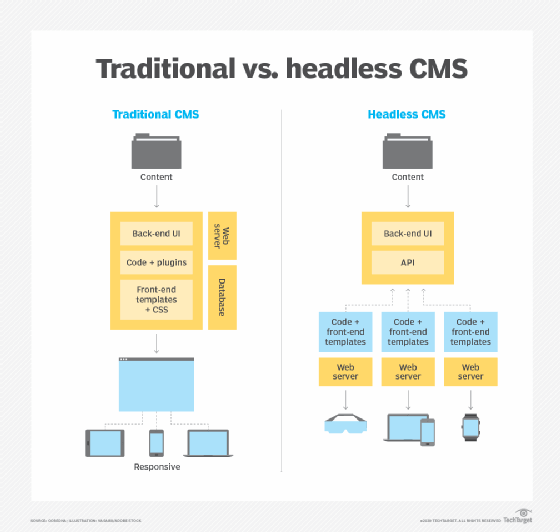Headless CMS
What is Headless CMS?
Headless CMS is a content management system that separates where content is stored (the “body”) from where it is presented (the “head“). You can store the content in your headless CMS and then send it to display anywhere – offering a lot more flexibility as to how it's presented in different places.

How does a Headless CMS work?
Headless CMS works by:
- Giving editors an interface for managing content.
- Providing that content via APIs for developers to query and build applications with.
Most headless CMSes are offered as a Software as a Service (SaaS), meaning that your editors will have to log into a web application and that the APIs are hosted in a cloud-based backend.
To use a headless CMS, you have to build a website or an application first, then use the CMS's API to query and serve your content into it. This is in contrast to “creating your content on the website” as in the case of page builders and classic Web CMS.
Should I use Headless CMS?
When not to use Headless CMS
- Your content doesn't need to be updated often.
- Your team doesn't have sufficient development resources internally.
- Speed and scalability are not important factors for your projects.
When to Use Headless CMS
- You have a diverse set of platforms and need a central content hub to pull the data from.
- You have front-end development resources available.
- You want to use your preferred languages and frameworks.
- A unique design is needed to display your content.
- Your project is multi-device and multilingual.
- Content is regularly added or updated.
Adavantages of Headless CMS
- Front end freedom
- Well structured data
- Future-proof content
- Security and Scalability
Wordpress + Angular Demo
- Stories from Around - Wordpress version
- Stories from Around - Headless CMS version
- Tutorial : Create a Blog Page with Wordpress API and Angular 12
- Wordpress Documentation